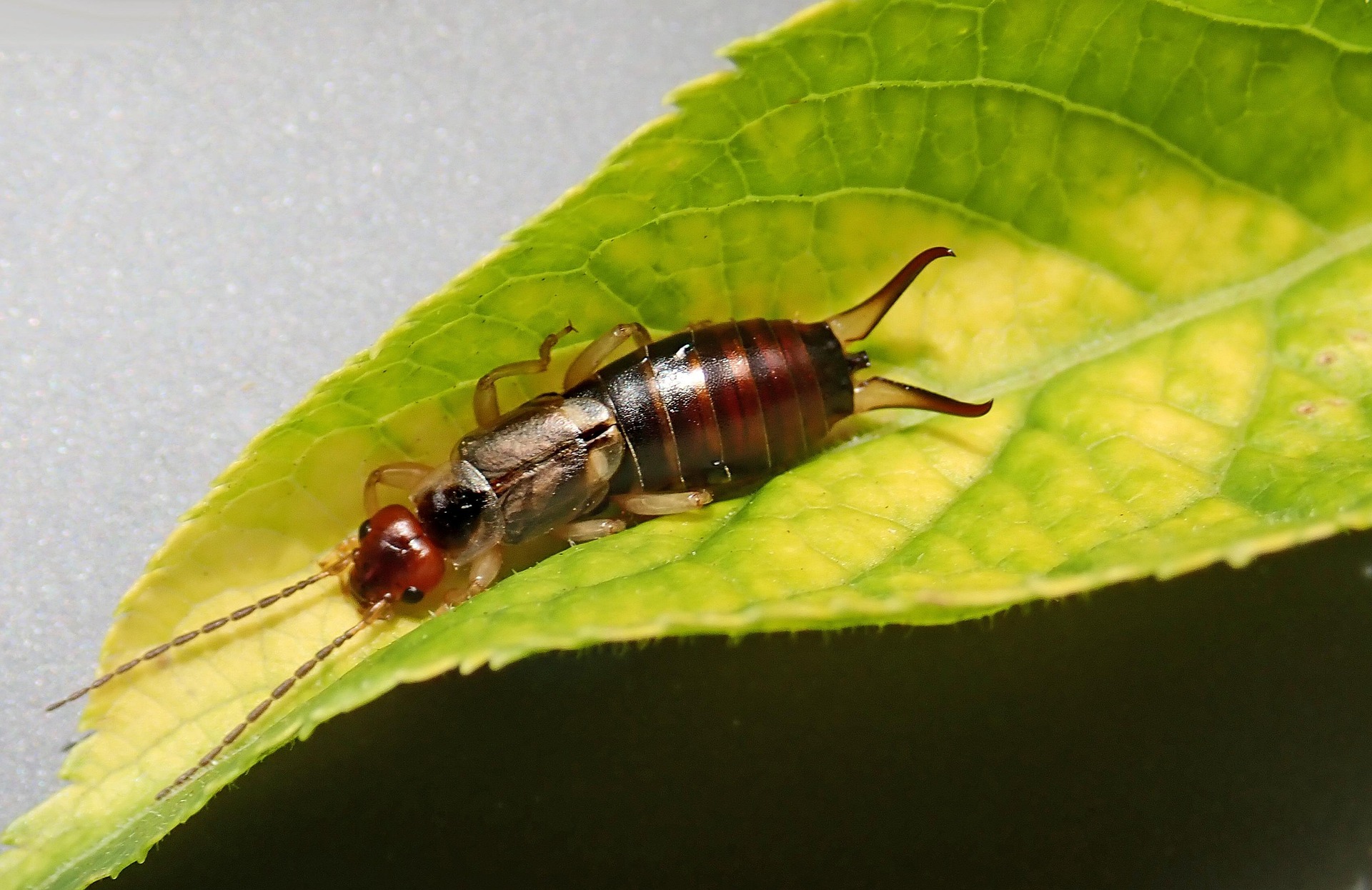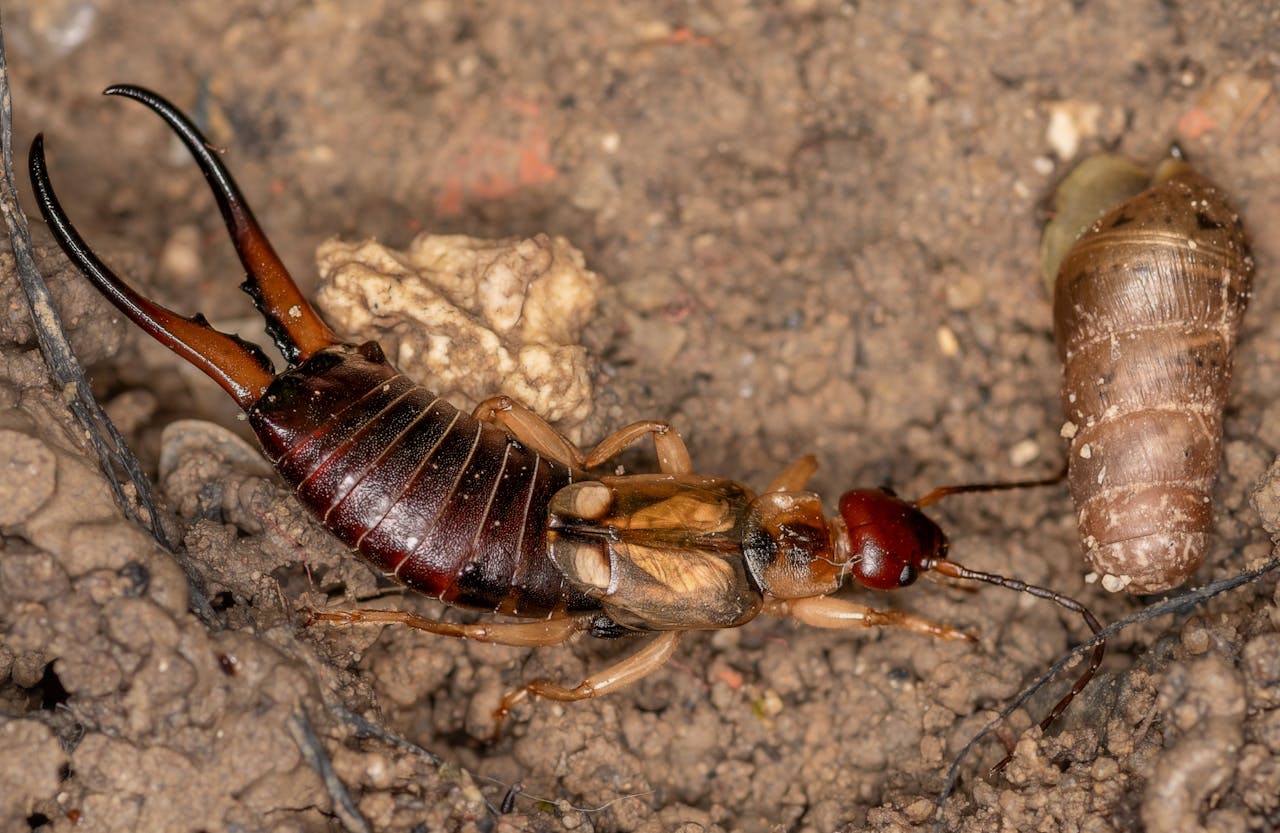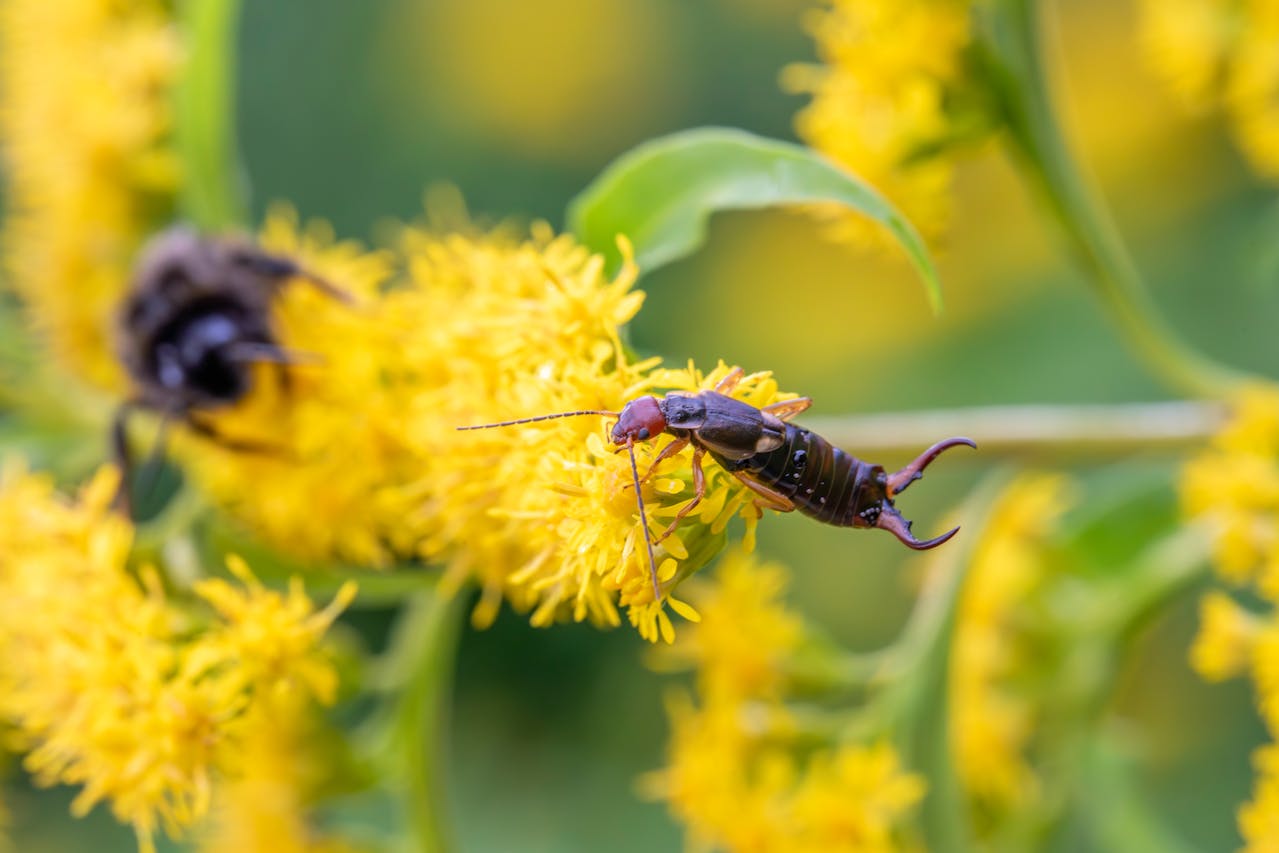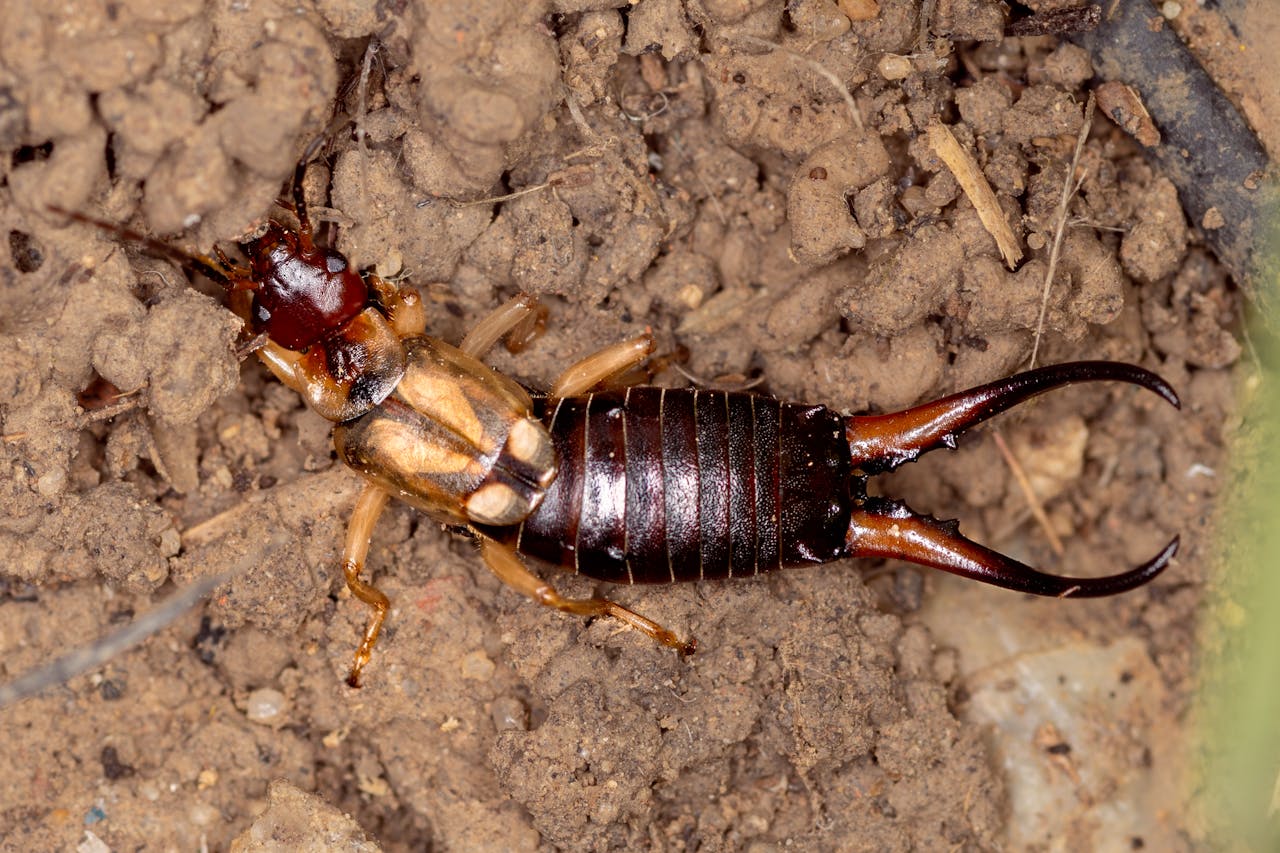
Window Treatment & Styles
How to Get Rid of Earwigs: Best Tips and Tricks
Earwigs are one of those pests that usually cause more panic than they deserve, thanks in part to the myth that they crawl into people's ears and lay their eggs there!
While these insects are not harmful to humans, they can become an unpleasant nuisance in your home and garden. Plus, their presence often points to other issues like excess moisture or cracks in your home's exterior.
In this guide, we'll walk you through everything you need to know about these tiny creatures: how to identify them, where they hide, how to get rid of earwigs, and how to prevent them from coming back.
Key Takeaways
- Earwigs thrive in damp environments. Fix leaks, use dehumidifiers, and improve drainage inside and outside your home to make it less inviting.
- These flat-bodied pests sneak in through cracks and gaps around windows, doors, utility openings, and even worn-out bug screens. Proper sealing and installing well-fitted windows are crucial to keeping them out.
- Use DIY earwig traps with oil, soy sauce, or damp cardboard. You can also use natural repellents like diatomaceous earth, neem oil, and essential oil sprays.
- Since earwigs are attracted to light, turn off unnecessary outdoor lights, use yellow bug bulbs, close curtains and blinds, and install motion sensors.
What Are Earwigs?

Earwigs, also known as pincher bugs, have some distinctive features that can help you identify them:
- Elongated, flattened body with a segmented abdomen, measuring between 7 and 50 mm, depending on the species
- A pair of forceps-like pincers (cerci) at the end of the earwig's abdomen
- Thread-like antennae
- Six slender legs
In Canada, you may stumble upon the spine-tailed earwig, which has a dark chestnut brown color, and the European earwig, which is brown and approximately 15 mm long.
Earwigs are often found in woodland, fields, and gardens. They are nocturnal insects. During the day, they hide in dark, moist environments. At night, they become active in search of food. They are primarily omnivores. Therefore, earwigs eat plants, ripe fruit, and arthropods. However, they can sometimes eat decaying plant or animal matter.
They may produce a foul-smelling yellow liquid when they feel threatened, at the same time using their pincers in defense.
Female earwigs lay up to 50 eggs in moist soil or hidden crevices. Eggs hatch in about a week, and young nymphs resemble adults without wings. Adult earwigs can reproduce quickly under the right conditions, especially in damp basements, mulch, or flower beds.
Should You Be Concerned?
Earwigs are not dangerous for humans or animals, as they are not known to transmit any diseases.
There's a common misconception that earwigs crawl into human ears, lay eggs inside the human body, and cause deafness. This is a myth, so you don't have to worry about that. Earwigs do sometimes crawl into human ears, but they do this simply because they like dark, moist environments. This happens rarely, and if it does happen, a doctor can easily remove the earwig.
Earwigs may also use their cerci to pinch humans or animals, but they aren't strong enough to cause significant pain. However, given their reputation, unsightly appearance, and rapid movements, it's understandable that many people don't like having them around.
Additionally, while earwigs can help control pest populations, they also eat foliage and can damage flowering plants and fruit trees. They are known to damage flowers, raspberries, corn crops, peaches, apricots, and not only. Furthermore, they may also leave earwig excrements, which look like small, black pellets.
Common Hiding Places for Earwigs
Earwigs are masters of concealment, seeking out dark, damp crevices to hide during the day, especially during warm, dry weather. Indoors, they often find refuge in:
- Kitchens
- Bathrooms
- Laundry rooms
- Basements
- Crawl spaces
Outdoors, earwigs prefer cool, damp areas such as:
- Woodpiles
- Decaying plant material
- Beneath stones
How to Get Rid of Earwigs: 9 Best Methods

Addressing the conditions that attract earwigs is key to natural eradication. Therefore, in the following sections, we'll discuss some effective ways that can help you get rid of earwigs in and around your house!
1. Remove Excess Moisture
Earwigs absolutely love moist environments. Because of this, it's important to keep indoor humidity levels in check, as well as fix any humidity issues in your yard.
Here are some tips that can help you:
- Fix leaks. Check under sinks, behind appliances, around toilets, and outside spigots for slow leaks.
- Improve drainage. Grade soil so water drains away from your home. Consider French drains or dry wells if standing water is an issue.
- Use gravel borders. Install 6–12 inches of gravel or stone around your home’s perimeter to reduce moisture retention.
- Check the window well drainage system. If water accumulates in the window well surrounding your basement windows, it may also be leaking inside your basement through cracks in the walls or around windows.
- Use a dehumidifier to lower humidity levels. If you live in a region like Ontario, which has high humidity in the summer, the moisture inside your house may not be related to any leaks. In this case, a dehumidifier can really help.
2. Remove Attractants in the Yard
Earwigs usually hide in organic materials and shaded, cool environments during the day. Therefore:
- Clean up organic debris. Regularly rake dead leaves, grass clippings, and decaying mulch.
- Avoid overmulching. Use fine mulch no more than 2-3 inches deep. Avoid placing it directly against the foundation.
- Store items properly. Raise woodpiles, bricks, and unused pots off the ground to eliminate potential hiding spots.
- Avoid overplanting. Leave some space between plants and the house to increase airflow and light exposure.
3. Seal Entry Points to the Home
Earwigs are often spotted inside houses because they can easily squeeze through tiny cracks and crevices thanks to their flattened bodies.
Here's what you should inspect and fix:
- The foundation and the walls. Use silicone or polyurethane caulk to seal foundation cracks and siding gaps.
- Door and window frames. Install or replace weatherstripping and thresholds. Replace windows if they're old, if the frames are warped and cracked, and if they don't close tightly.
- Utility openings. Seal gaps around cable, gas, and water lines with expanding foam or sealant.
- Basement windows. Check for broken seals or missing screens.
- Bug screens. Even a tiny hole in a bug screen can let many earwigs inside your house. Repair or replace them as soon as possible.
If you need to replace your windows or glass doors with energy-efficient, properly insulated, and highly durable units that also come with advanced bug screens, you can contact Magic to learn more about our products!
4. Keep Your Lights Off in the Evening
Earwigs are attracted to light. Bright lighting can draw them toward your home and increase the chance of earwig infestation. Plus, light also attracts other insects they prey on, so earwigs may follow them.
Here are some tips in this regard:
- Turn off lights when not needed, especially exterior porch lights.
- Use motion sensor lights. Instead of leaving lights on all night, install motion-activated lights to reduce constant illumination.
- Switch to yellow bug bulbs. These bulbs emit a wavelength less attractive to insects (including earwigs) compared to standard white or blue-toned lights.
- Close curtains and blinds, but keep in mind that some blinds still leave gaps around them. Instead, you can install Magic's thermal blinds, which are opaque and cover the window opening completely.

5. Set Up Homemade Earwig Traps
Traps help you monitor and reduce earwig numbers in a targeted way.
Here are the best DIY traps earwigs:
- Cardboard roll: dampen a piece of cardboard, roll it up, and secure it with rubber bands. Place it in garden beds at night and dispose of earwigs in the morning.
- Oil and soy sauce trap: bury a shallow container filled with equal parts vegetable oil and soy sauce. Cover lightly with a lid with small holes. Earwigs crawl in and drown.
- Cardboard tube trap: use an empty toilet paper or paper towel roll with a bit of oatmeal inside. Earwigs crawl in at night to hide and can be discarded the next day.
- Plastic cup trap: fill a small plastic cup halfway with soapy water and place it under outdoor lighting, where earwigs gather.
- Fish oil trap: partly fill a shallow container, such as a tuna can, with oil and bury it to the rim in the soil (earwigs are attracted to fish oil).
6. Let Nature Take Its Course
Earwigs have many natural predators, so let nature take its course! Encouraging beneficial wildlife can really help control earwig populations.
Here are some earwig predators you can invite into your garden:
- Birds. Install bird feeders or birdbaths. Wrens, robins, and sparrows feed on earwigs.
- Ground beetles and spiders. These nocturnal predators feed on earwigs, so let them be as long as they don't cause problems.
- Chickens or ducks. These are excellent for natural pest control.
7. Use Natural Repellents
Here are some natural earwig repellents you can try:
- Diatomaceous earth: a fine powder that affects insect exoskeletons, causing dehydration. Apply along baseboards, garden beds, and foundations. Avoid inhaling it.
- Boric acid: acts similarly to diatomaceous earth but is more toxic. Use in dry, inaccessible areas.
- Essential oil sprays: mix a few drops of peppermint, eucalyptus, or citronella oil with water and a bit of dish soap. Spray around entryways, baseboards, and windows.
- Neem oil: disrupts insect reproduction and feeding. Mix and spray on plants or garden beds.
- Herbs: rosemary and basil, for example, can deter earwigs naturally.
8. Indoor Earwig Control and Cleaning
If you spot some earwigs inside your house, you should kill or relocate them as soon as possible to prevent infestation.
Here's what you can do:
- Vacuum: use a handheld vacuum to remove visible earwigs. Seal and dispose of the bag promptly.
- Use sticky traps: place them near sinks, under appliances, and in basements. Replace the traps frequently.
- Clean regularly: sweep crumbs, mop floors, and wipe down damp areas.
- Eliminate damp areas: use dehumidifiers and fix ventilation in kitchens, bathrooms, and basements.
- Create a dry zone around the foundation: lay gravel strip along the foundation and limit the use of dense shrubs near the home.
- Inspect flowers or vegetables: before bringing them in, check if no earwigs are hiding between leaves.
9. Control Earwigs in the Garden
As mentioned earlier, earwigs can damage plants. Therefore, it's best to make sure that their populations are kept in check.
Here are some effective methods you can try:
- Barrier techniques: surround sensitive plants with DE.
- Row covers: use floating row covers to protect young plants from earwigs.
- Crop rotation: prevent buildup in garden beds by rotating vegetables seasonally.
- Kill other pests: earwigs eat other pests, such as aphids, so if there is a pest issue, contact your local pest control company to solve it.
- Remove damaged produce: inspect your garden every day and remove any damaged produce right away.
- Use petroleum jelly: spread it around the stems of your plants to keep earwigs away.
- Lay old garden hose sections: place them in the beds between your plants to trap earwigs.
What Should You Do If You See an Earwig?

Seeing an earwig can be alarming, but it doesn't always mean you have a full-blown infestation. Here's what you should do if you see an earwig indoors:
- Catch and dispose of it. Use a paper towel, tissue, or vacuum to quickly remove it. A mix of water solution and rubbing alcohol can also kill earwigs. If you use a vacuum, immediately empty the canister or dispose of the vacuum bag and the trapped earwigs in a sealed outdoor trash bin.
- Avoid squishing it on carpets or curtains, as they can leave a stain or emit a foul odor.
- Check nearby hiding spots like under baseboards, sinks, bathroom mats, and around windows to see if there are more earwigs.
- Place a sticky trap where you saw the earwig to catch any others that may be nearby.
- Sanitize the area to remove any scent trails that might attract more insects.
Here's what you should do if you see an earwig outdoors:
- Observe their behavior to find their hiding spots.
- Check for plant damage and set up traps or apply repellents.
- Disrupt their hiding place by raking away plant debris, moving pots or firewood, and applying diatomaceous earth or other repellents.
- If earwigs damage crops or create unsanitary conditions in your home, it's recommended to seek professional help and avoid using chemical pesticides yourself. Professional pest control services often combine powder treatments and residual sprays to effectively manage earwig populations and other pest infestations.
- If you do decide to use chemical insecticides, follow label directions and safety precautions.
Upgrade Your Home’s First Line of Defense with Magic
One of the most effective ways to keep earwigs and other pests out is by eliminating their entry points, especially through windows, doors, and bug screens.
At Magic, we specialize in high-performance, energy-efficient windows and doors designed with built-in, retractable bug-proof screens that prevent even the smallest insects from sneaking in.
Our innovative products not only help you maintain indoor comfort and save on energy bills but also form a strong barrier against pests, no matter the season.
Interested in learning how our products can protect your home against pests like earwigs while improving comfort and energy efficiency? Contact Magic today to explore our advanced solutions and get a free consultation with one of our window experts!
Frequently Asked Questions
What is the quickest way to get rid of earwigs?
The quickest way to get rid of earwigs is to use a mix of water and rubbing alcohol to kill them, essential oils, or place commercial or DIY traps.
What do earwigs hate the most?
Earwigs hate dry, well-lit environments and strong scents like peppermint and eucalyptus.
What attracts earwigs?
Earwigs are attracted to moisture, decaying plant matter, mulch, and dark, damp places where they can hide and breed.
Why do I have earwigs?
You probably have earwigs because your home or yard has areas with high humidity, organic matter, or easy access points like cracks or poorly sealed doors.
What scent will keep earwigs away?
Scents like peppermint oil, eucalyptus, lemon, or lavender are natural repellents that can keep earwigs away when used in sprays or diffusers.
Do earwigs bite humans?
Earwigs do not typically bite humans, as their pincers are primarily used for defense and to capture prey.
When should I call a professional pest control service?
You should call a professional pest control service when DIY methods are ineffective or if the infestation leads to substantial damage or unsanitary living conditions.
Why do I keep getting earwigs in my house?
You may be getting earwigs in your house if your house has ongoing moisture issues, if there are cracks or gaps in your home's exterior, or if your house has favorable indoor hiding spots earwigs are attracted to.